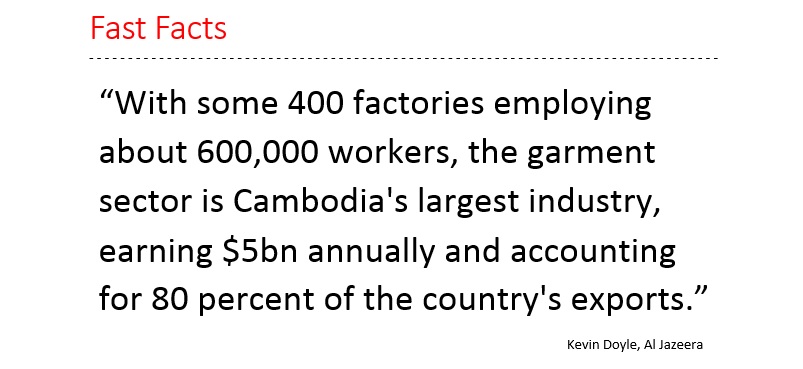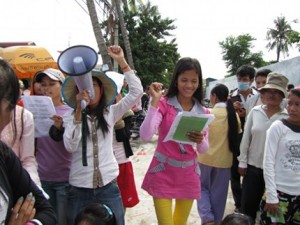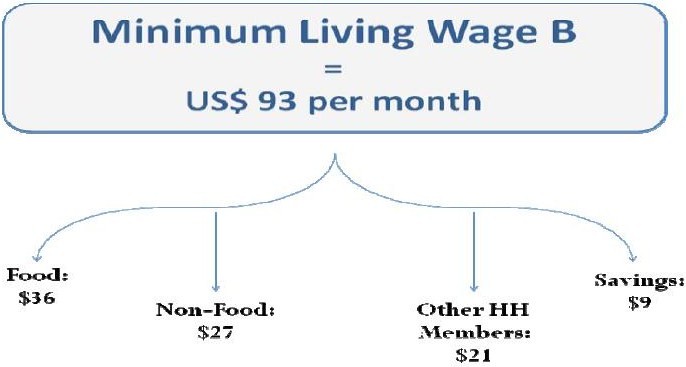
A worker’s sign demanding $160/month minimum wages | Image taken at a rally by Mu Sochua, a Cambodian opposition party MP [click the photo to go to her blog].
It is important to add that these demonstrations are not limited to wage issues. As I wrote on January 4th on the SA facebook page:
“Keep in mind that this is not just about wages but also stems from a complicated alliance between the numerous unions & the opposition party to challenge Hun Sen’s 28-year rule. This is part of an ongoing movement kickstarted by the July 2013 election which the opposition believes was rigged. They have since boycotted parliament, calling for new elections in daily rallies in Phnom Penh. And in the middle of all this politics is the fashion supply chain.“
For a bit more on the background to these protests, listen to the following conversation from the CBC’s As it happens (Jan. 3rd):
Here are some updates specific to the garment industry angle of this story:
- The protests continued over the week culminating in 5 deaths and around 40 injuries when authorities opened fire. Meanwhile, the Garment Manufacturers Association of Cambodia (GMAC) estimates sales losses of US$200 million and project a 30 per cent drop in orders in 2014 due to the protests. GMAC, in a press conference, condoned the military police’s reaction to protesters, and blamed striking workers for all deaths which were described as “collateral damage”.
- Today’s news reports (see also here) confirm that the protests are suspended (for now) as unions advised workers to go back to work. Union leaders plan a meeting to regroup and rethink their protest strategy.
- Sithi.org uploaded an open letter from some brands to Prime Minister Hun Sen, the Cabinet of the Prime Minister, the Council of the Ministers, the Chairman of GMAC and union leaders calling for a peaceful resolution of this conflict and expressing deep concern over the violence writing further that “[o]ur primary concerns are for the security and safety of the workers employed by our suppliers and the long-term stability of the Cambodian garment industry.” The brands added “[w]e believe that the only way to resolve this dispute is to cease all forms of violence, and for stakeholders to enter into good faith negotiations, allowing workers to safely return to work without fear of repercussions as soon as possible.” Kudos to the signatory brands: H&M, Gap Inc., Inditex, Adidas Group, Puma, Levi Strauss & Co., and Columbia.
- Finally, to add an international political economy dimension to these protests, there is a report (see also here) that details the South Korean embassy’s involvement in back channel dealings pressing the Cambodian government to protect Korean interests. South Korea was the largest investor in Cambodia in 2012.
This story is ongoing and we’ll do our best to continue the updates on a regular basis. In the meantime, keep up with events over our Fb page and our twitter feed.







